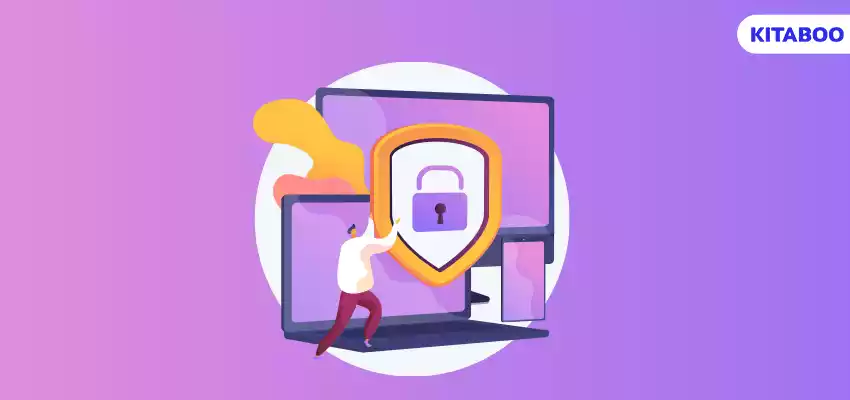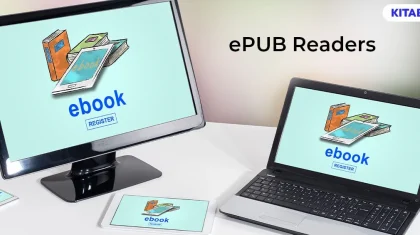
Navigating DRM Protected eBooks: A Comprehensive Guide
Summarize this blog with your favorite AI:
Readers have quickly embraced eBooks’ convenience in the fast-evolving digital age. All sorts of readers, from students, researchers, and educators to casual readers, can now access their favorite books anytime, anywhere, without carrying heavy books. Not just accessibility and convenience but also cost-effectiveness have contributed to eBooks’ popularity.
eBooks are much more cost-effective than print versions and enhance the reading experience through numerous customization options. Readers can adjust the font size, line spacing, alignment, etc., and interact with the content through highlighting, bookmaking, and note-taking features. However, along with these benefits comes the issue of eBook DRM, i.e., digital rights management.
DRM-protected eBooks require some knowledge on the part of readers to navigate them effectively and continually avail themselves of all of their benefits. In this comprehensively curated guide, we have covered everything you need about eBooks protected by DRM.
To help you understand eBook DRM in detail, let’s start with the basics.
Table of Contents
III. DRM for eBook Security and User Experience
What is DRM?
DRM, or digital rights management, refers to the tools and technology used to monitor and control digital content access, usage, and dissemination. An extensive set of rules, policies, and guidelines help content creators and distributors implement the DRM and protect their intellectual property rights.
How Does DRM Work?
DRM operates within multiple layers to stop unauthorized distribution and protect the readers’ privacy. Mentioned below are the multiple layers through which DRM protects eBooks:
Encryption Key
The encryption key can be understood as a virtual lock without which users cannot access eBooks or other digital content.
Even if users manage to share eBooks through unauthorized mechanisms, the encryption will make the text unreadable and incomprehensible. Other content elements, like images, graphs, illustrations, etc., would also scramble without a proper decryption key.
Usage Control
To implement eBook usage control, DRM utilizes various mechanisms, such as copy protection, printing restrictions, watermarking, tracking, online validation, etc.
DRM often limits the number of devices on which the digital content can be accessed. If multiple unregistered devices attempt to access the eBook, the devices may be blocked.
License Acquisition
Various quality DRM solutions like KITABOO require users to obtain a license and register with the platform to access their DRM-protected eBooks.
The registered account is a centralized platform through which users and distributors can manage the purchased eBooks and their access. Some DRM platforms allow the sharing and transfer of licenses between 2-3 devices.
Expiration
Some DRM solutions protect their eBooks by setting expiration dates. Users cannot access the content after expiration without renewing their subscription. However, expiration protocols and renewal cycles vary for each DRM platform.
DRM for eBook Security and User Experience
It is of utmost importance for DRM platforms to strike the right balance between eBook security and user experience. Too much focus on content protection can compromise the readers’ user experience. In contrast, too little protection can compromise the readers’ privacy and the creator’s intellectual property rights.
Keeping this in mind, KITABOO, a digital textbook platform, offers industry-specific custom-made DRM solutions. While it offers quick integration with proprietary subscription systems to non-profits, it offers extensive global distribution capabilities to K-12 publishers.
Mentioned here are some benefits of eBook DRM, which promise a great user experience to the readers along with protecting their privacy:
Device Compatibility
DRM solutions ensure that eBooks are compatible with various authorized devices, such as eBook readers, tablets, laptops, smartphones, etc., so readers can access eBooks anytime, anywhere. This provides readers with an uninterrupted and customizable reading experience without worrying about compatibility and format limitations.
Safe Transactions
Readers often utilize payment gateways on the DRM platform to purchase and access new content.
Therefore, the DRM solution must utilize secure payment processes and encryption tools to safeguard the users’ financial information. Safe and secure transaction gateways also foster trust with the users, enhancing their commitment to the eBook platform.
Personalized Recommendations
eBook platforms also deploy DRM solutions to provide tailored suggestions by tracking readers’ preferences and reading habits. Users who do not want the eBook platform to give them recommendations can switch off the tracking feature.
Challenges of DRM
While DRM plays an important role in protecting readers’ privacy and the creators’ intellectual property rights, it poses some challenges. Some of its common challenges are:
- Incompatibility and interoperability issues
- Vendor lock-in limits the reader’s freedom of choice
- Restricted usage
- Potential misuse of personal information
- Limitations in fair use
- User Frustration and Complexity
- Unforeseen content expirations
Strategies for Navigating Through DRM Challenges
Despite these challenges, eBooks DRM is a much-needed mechanism to protect the privacy and rights of all stakeholders involved. Mentioned here are some navigation strategies you can keep in mind while dealing with DRM-protected eBooks and digital content:
Multi-Platform eBook Readers
To solve the challenges of restricted usage, it is recommended that you do thorough research while selecting an eBook reader application. Commit yourself to a reader that supports multiple platforms and offers broader compatibility with DRM-protected eBooks.
Library Backup
Do not forget to regularly back up your eBook library to combat unforeseen content expirations. DRM solutions send expiration notifications, but sometimes users forget to renew their subscriptions for various reasons.
To ensure uninterrupted access, users must regularly back up their content. Cloud services like Google Drive, iCloud, or Dropbox can be utilized for monthly or weekly automated backups.
DRM Free Alternatives
For some eBooks and digital content that are highly priced on your eBook platform, readers can find DRM-free eBook formats on the web. Many independent publishers and online stores use formats like e-PUB or PDF with excellent flexibility and compatibility.
Advocate for a Positive Change
Support projects and independent groups pushing for improved digital economy consumer rights, including DRM reform. Readers can influence the development of a more accessible and equitable future for digital material by bringing attention to privacy issues and advocating for alternative methods.
Wrapping Up
By closely understanding the principles and determining factors of DRM-protected eBooks, readers can navigate the digital content ecosystem effectively and efficiently. DRM enhances the reading experience and user privacy and contributes to the long-term sustainability of the eBook industry in this rapidly advancing digital world.
Digital textbook platforms and DRMs like KITABOO are a one-stop solution for creating and distributing eBooks safely and effectively. They can help users manage licenses and books, whereas they can help distributors onboard customers and analyze usage.
Connect with us to start a conversation.
Discover how a mobile-first training platform can help your organization.
KITABOO is a cloud-based platform to create, deliver & track mobile-first interactive training content.



